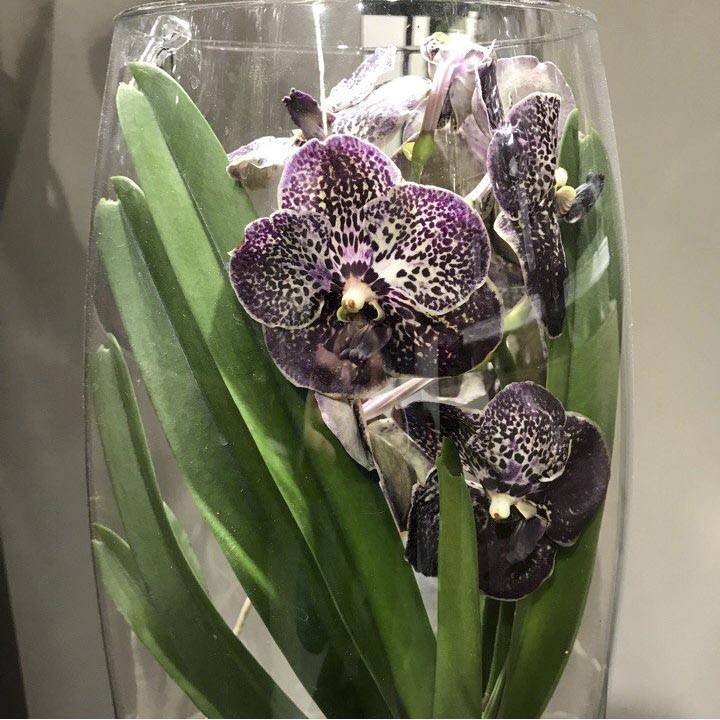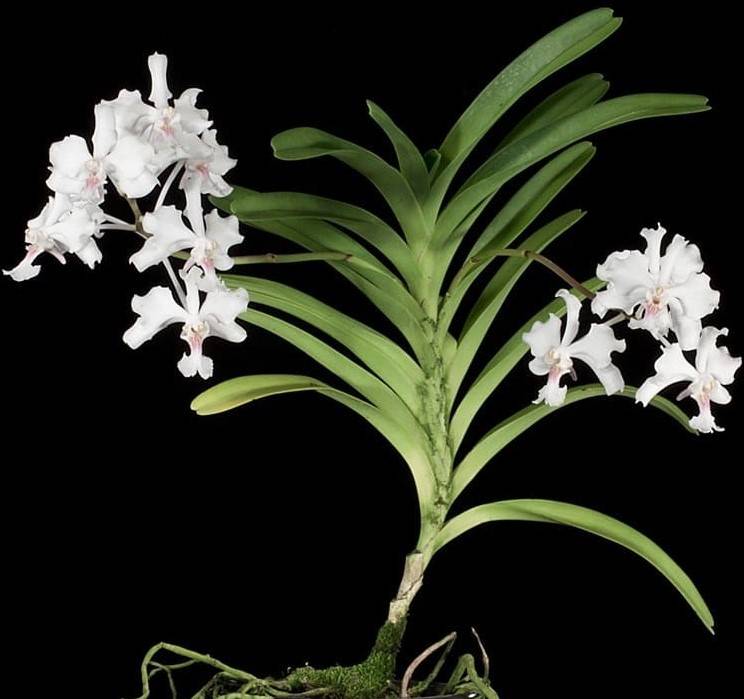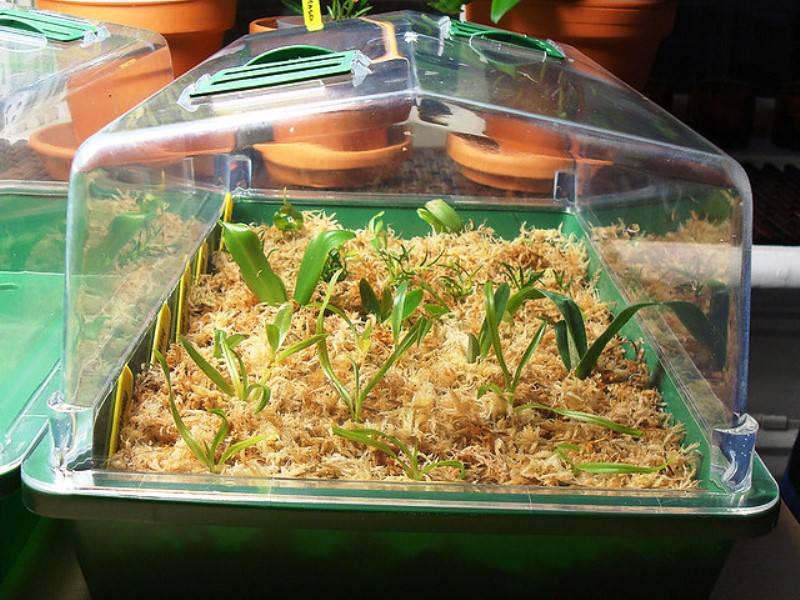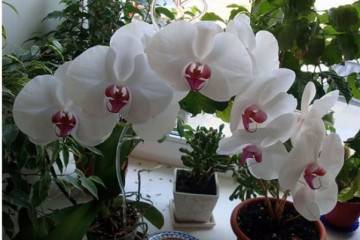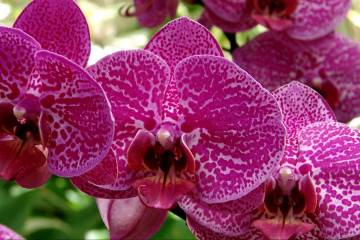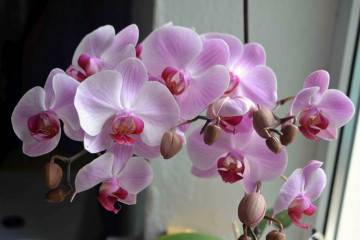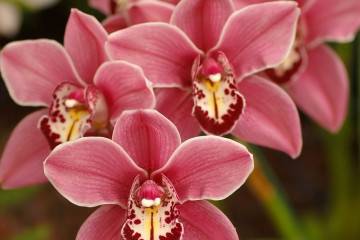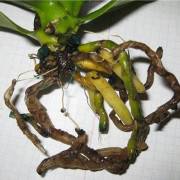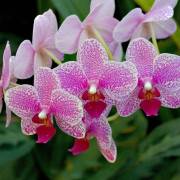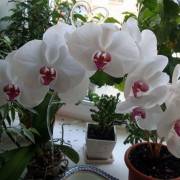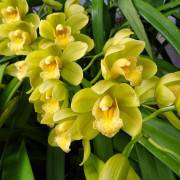Orchid Wanda - home care
Content:
An epiphytic plant native to South Asia called Wanda Orchid will be a decoration of any home and the pride of a florist. These exotic plants have long been chosen by the window sills of houses, apartments and even office buildings. Wanda is considered to be one of the most luxurious orchids.
What does the Wanda orchid look like?
Wanda Orchid was developed in Asia by scientist William Jones. In the wild, this flower can be found in Thailand, Indonesia, Northern Australia, Southern China and the Philippines.
The flower grows up to one meter in height. There are also specimens that are even higher in height. The leaves of this orchid species are leathery and belt-like. They are located alternately on the stem and die off during aging.
Pseudobulbs are not formed in this flower, since it only grows upward. Peduncles are straight or drooping. They can form from 2 to 15 monochromatic or multi-colored flowers.
The roots of this plant deserve special attention. They are very powerful, gray-green in color. The roots are closed from the negative effects of sunlight with the help of a dense layer of dead cells of a porous structure. Yet exposure to sunlight should be carefully monitored. If rays fall on the flower, then it should be transferred to another windowsill or a cloth should be hung in front of it.
Common varieties
The Wanda orchid has a huge number of different varieties. Their representatives differ from each other in size and color.
The most common are the following:
- Blue - the flower grows up to 1 meter in height. Leaves are oval, elongated, closely spaced to each other. The flowers are purple-white with a pleasant aroma.
- Tricolor - the orchid grows up to 1.5 meters in height. The flowers are about 8 cm in size, wavy with white petals, which also have red spots.
- Chess - the flower grows in height in the range from 70 to 100 cm.The color is predominantly beige or brown. Has a pleasant aroma.
- Sandera - plant height can vary from 60 to 120 cm. Peduncles grow on average up to 50 cm. They are pink, yellow or white.
- Rough is one of the tallest orchid species. Height varies from 150 to 200 cm.
- Rothschild - plant height varies from 80 to 100 cm. Flowers are bluish purple with a dark short lip. The leaves are rough with bifurcated tips.
- Norbert Alfonso - a flower with medium peduncles in height grows from 80 to 90 cm.The petals of the plant are painted pink. The leaves are rounded, pointed.
- Javiera - orchids with a low stem, the height of which varies from 35 to 50 cm.The petals are white. Dark green leaves are collected in dense rows.
Features of home care
In order for the Wanda orchid to grow and develop normally, care and cultivation at home must be carried out in accordance with certain rules.
Temperature
Vanda is a very thermophilic plant. When growing it in the middle lane, the plant needs to provide an air temperature in the range from 18 to 30 degrees. Moreover, at night it should not fall below +16.
Lighting
Wanda is one of the most light-loving plants. In this case, you should not allow direct sunlight to fall on the flower. They can cause burns.
Regardless of the season, daylight hours should average about 12 hours. Diffused light is considered the most optimal for these plants.
Watering
In summer, the orchid needs to be watered once a day, and in winter, the number of waterings should be reduced to 1 time in 2-3 days.
It is strictly forbidden to allow stagnation of moisture near the root system.
Spraying
It is necessary to spray only those Vand varieties in which the root system is bare.
Humidity
In the area of \ u200b \ u200bthe crown and leaves, it is recommended to maintain humidity within 70%. Only in this case can a significant acceleration of plant growth be observed.
Priming
Experienced growers recommend growing this kind of orchid with a bare root system. This is how the best air circulation is ensured. In addition, the plant will feel good in a substrate of crushed pine bark and various impurities.
Top dressing
Despite the fact that the Wanda orchid is very fond of feeding, fertilization should be applied only when the flower is in an active phase.
During this period of time, fertilizers must be applied with each watering.
Features of care in winter, dormant period
For an orchid to always look luxurious, it needs proper care. Particular attention should be paid to the flower in the winter. Indeed, it is during this period of time that the plant needs to ensure the correct watering, lighting and temperature conditions. Otherwise, her condition will worsen significantly.
When and how it blooms
If the orchid is properly looked after, then it will bloom for 1.5 months several times a year.
Types and shape of flowers
The peduncles of the representatives of this variety are high. Grow from the axils of the leaves. The shade can be completely varied.
The most common flowers are considered to be white, blue, yellow, orange and blue. The shape of the flowers differs depending on the type of orchid.
Flowering period
To enhance flowering, experienced growers prefer to fertilize the plant. Representatives of this variety do not have a pronounced dormant period. On average, it lasts for 6 to 8 weeks, but sometimes it can last for about three months.
Features of care during flowering
It is not recommended to change its location during the flowering of the Wanda orchid, as the flower will begin to adapt to new conditions and shed its buds.
It is necessary to ensure that the roots are in the light, therefore, it is best to plant the flower immediately in a transparent container. The air temperature should be between 18 and 22 degrees.
Pruning
As soon as the orchid begins to lengthen too much, or lose the lower leaves, it must be cut off.
Only the upper part is cut, which can be planted as a separate plant.
Experienced flower growers advise to sprinkle the place of the cut with crushed coal.
Reproduction methods
There are several ways to propagate an orchid. Most often, the flower reproduces vegetatively.
Germinating seeds
Seed propagation is used exclusively in laboratory conditions. In order to grow an orchid in this way, you need to place the seeds in a nutrient medium obtained under sterile laboratory conditions.
In this case, it will take a very long time to grow a plant.The seed germinates for about 9 months, and to grow the shoot, you need to wait about 3 years.
Orchids are often grown in laboratory conditions in special flasks or glass vases, but this method has a lot of nuances.
Dividing the bush
By dividing the rhizome, the orchid is propagated only if it has more than one growth point. In this case, the bush is divided and planted in different pots.
Transfer after purchase
Immediately after purchasing an orchid, it must be transplanted. Also, such manipulations can be performed as needed, for example, when the roots cease to fit in the pot.
Experienced growers prefer to transplant the plant at least once every 3-4 years.
Diseases and pests
Most often, the Wanda orchid is affected by infectious fungal diseases. Also, the flower can become infected with black or bacterial spot, fungal infections, bacteriosis or wet bacterial rot. As for insects and pests, they are not very fond of this flower.
If problems arise with a flower, you should immediately take measures to eliminate them. At the initial stage, beginner growers should follow the advice of more experienced ones in order to learn how to properly care for and maintain these amazing plants.
Wanda Orchid is a lush and delicate flower that originates from the tropical jungle. The bright and exotic appearance of this plant leaves no one indifferent. Wanda is not a cheap flower - it is often passed off as a hybrid. Therefore, when choosing, you should be extremely careful.

